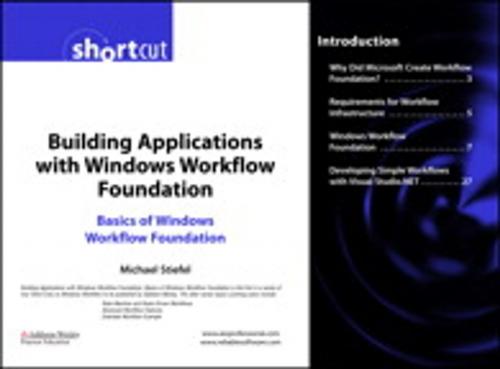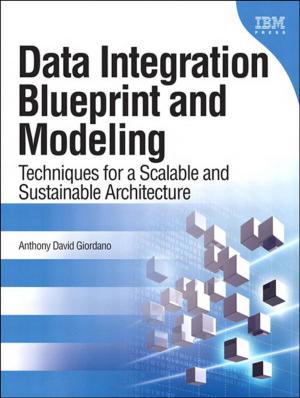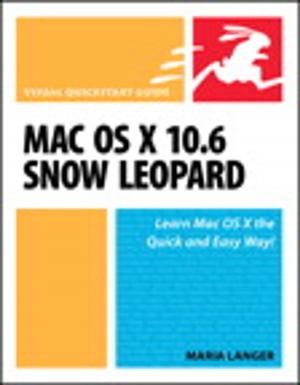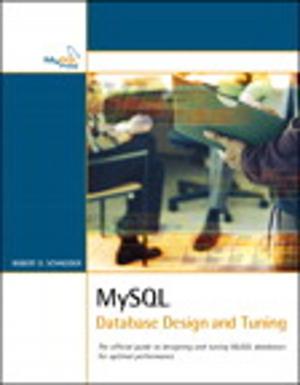Building Applications with Windows Workflow Foundation (WF)
Basics of Windows Workflow Foundation (Digital Short Cut)
Nonfiction, Computers, Programming, Software Development| Author: | Michael Stiefel | ISBN: | 9780132701501 |
| Publisher: | Pearson Education | Publication: | June 5, 2007 |
| Imprint: | Addison-Wesley Professional | Language: | English |
| Author: | Michael Stiefel |
| ISBN: | 9780132701501 |
| Publisher: | Pearson Education |
| Publication: | June 5, 2007 |
| Imprint: | Addison-Wesley Professional |
| Language: | English |
This is the eBook version of the printed book.
Windows Workflow Foundation (WF) is Microsoft's programming model for building workflow-enabled applications in the Windows operating system. It includes a namespace, a workflow engine, and design tools that can be used with Visual Studio .NET. Workflow is an extremely important type of application that has been difficult to build on the Microsoft platform. Workflow Foundation is a major element of the .NET Framework 3.0 platform that enables application developers to build these types of applications.
In Building Applications with Windows Workflow Foundation; Part I: Basics of Windows Workflow Foundation, author, MVP, speaker, and leading consultant Michael Stiefel introduces readers to the basics of Windows Workflow foundation. The other parts of this series include
State Machine and Rules-Driven Workflows
Advanced Workflow Features
Extended Workflow Example
All of the “ Building Applications with Windows Workflow Foundation” Short Cuts were created with the professional developer in mind. The author’s unique approach is a combination of practical application with just enough understanding of the underpinnings for developers. It is not a book on "workflow plumbing” but a successful approach he has used for many years in consulting and training.
Features of this Short Cut series include
- Demonstrations on how to build practical workflow applications by solving problems that workflow developers will have to solve.
- Plenty of code that helps demonstrate how to solve the practical problems of building an application. The first three Short Cuts emphasize and illustrate how to build the elements of an application.
- The fourth Short Cut will pick a different application and illustrate how to build a workflow application with more emphasis on the design strategy and tactics using the problem solutions developed in the first three articles.
- Providing this information as a Short Cut will enable information to be delivered to developers quickly, more efficiently, and cheaply than could be done in a book, but with the quality of a book rather than the superficial level of most current articles.
Table of Contents
Why Did Microsoft Create Workflow Foundation?
Requirements for Workflow Infrastructure
Windows Workflow Foundation
Developing Simple Workflows with Visual Studio.NET
This is the eBook version of the printed book.
Windows Workflow Foundation (WF) is Microsoft's programming model for building workflow-enabled applications in the Windows operating system. It includes a namespace, a workflow engine, and design tools that can be used with Visual Studio .NET. Workflow is an extremely important type of application that has been difficult to build on the Microsoft platform. Workflow Foundation is a major element of the .NET Framework 3.0 platform that enables application developers to build these types of applications.
In Building Applications with Windows Workflow Foundation; Part I: Basics of Windows Workflow Foundation, author, MVP, speaker, and leading consultant Michael Stiefel introduces readers to the basics of Windows Workflow foundation. The other parts of this series include
State Machine and Rules-Driven Workflows
Advanced Workflow Features
Extended Workflow Example
All of the “ Building Applications with Windows Workflow Foundation” Short Cuts were created with the professional developer in mind. The author’s unique approach is a combination of practical application with just enough understanding of the underpinnings for developers. It is not a book on "workflow plumbing” but a successful approach he has used for many years in consulting and training.
Features of this Short Cut series include
- Demonstrations on how to build practical workflow applications by solving problems that workflow developers will have to solve.
- Plenty of code that helps demonstrate how to solve the practical problems of building an application. The first three Short Cuts emphasize and illustrate how to build the elements of an application.
- The fourth Short Cut will pick a different application and illustrate how to build a workflow application with more emphasis on the design strategy and tactics using the problem solutions developed in the first three articles.
- Providing this information as a Short Cut will enable information to be delivered to developers quickly, more efficiently, and cheaply than could be done in a book, but with the quality of a book rather than the superficial level of most current articles.
Table of Contents
Why Did Microsoft Create Workflow Foundation?
Requirements for Workflow Infrastructure
Windows Workflow Foundation
Developing Simple Workflows with Visual Studio.NET















